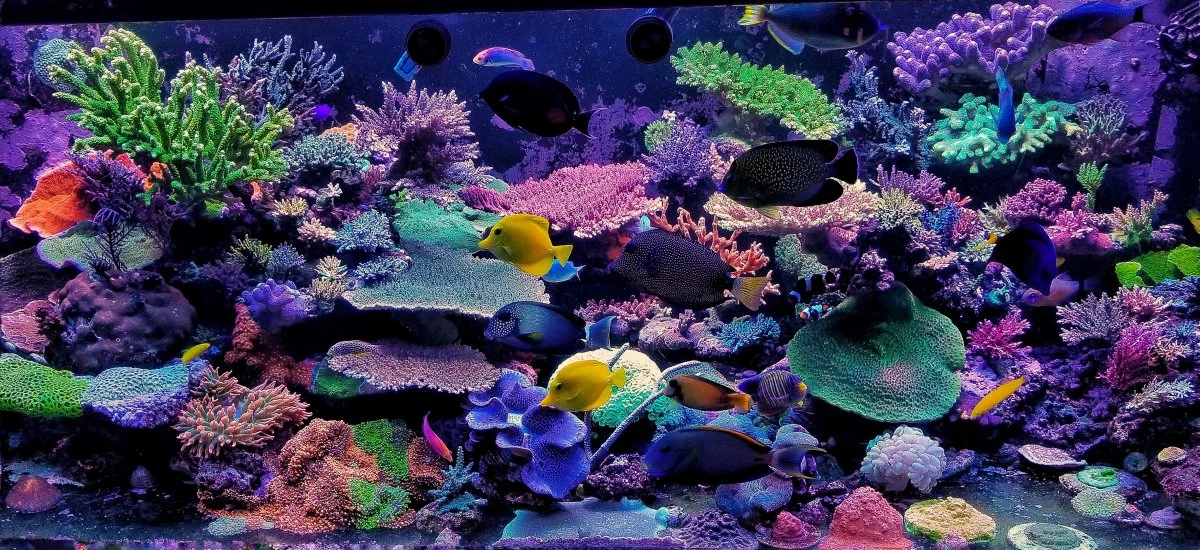Stunning 300-Gallon Reef Tank by robert s b | Reef2Reef

Tank Specifications
Volume: 300 Gallons / 1135 Liters
Dimensions (L × W × H):
72.0" ×
36.0" ×
27.0"
182.9cm ×
91.4cm ×
68.6cm
Equipment List
No equipment information available
Frequently Asked Questions
What are the ideal water parameters for a reef tank?
For a successful reef tank, you should aim to maintain the following water parameters: Temperature: 78-80°F, pH: 7.9-8.4, Specific Gravity: 1.024-1.026, Calcium (Ca): 400-450 ppm, Alkalinity (dKH): 8-12, Magnesium (Mg): 1250-1350 ppm, Nitrates (NO3): less than 5 ppm, and Phosphates (PO4): less than 0.03 ppm.
How do I maintain stable water quality in my reef tank?
To maintain stable water quality in your reef tank, perform regular water changes every 2-4 weeks, replace filter media on a schedule, and monitor parameters regularly with reliable test kits. It's also crucial to understand your livestock's requirements and adjust your feeding and maintenance routines accordingly.
What filtration method do you recommend for a reef tank?
The EcoSystem Miracle Mud method is highly effective for filtration. It provides biological filtration and nutrient export while promoting a healthy environment for macroalgae to thrive.
How often should I change my aquarium water, and how much should I change each time?
It's recommended to change about 10-15% of your total water volume every 2 weeks. However, in a densely populated reef aquarium, you might consider up to 25% monthly to help maintain water quality.
How can I effectively change water without disturbing my display tank?
To change water without disturbing your display tank (DT), you can directly pump water out from the sump to a drain or sink while allowing the sump to fill with fresh saltwater. Turn off your main return pump and let the sump fill to its highest level before restarting the system.
What type of lighting is best for a reef tank?
T5 lighting is a proven option for reef tanks due to its high output and effectiveness in maintaining coral health. Combining T5 with LED lights can provide a full spectrum of light needed for your corals.
How should I set up the photoperiod for my reef tank lights?
A suggested lighting schedule includes having LEDs on for approximately 10-12 hours, with T5s coming on midway through the cycle. For example, turn on the LEDs at 10 am, then T5s at noon, and keep them both on until 10 pm, tapering the blues before the T5s turn off to simulate natural lighting conditions.
How often should I feed my fish?
Feed your fish 3-4 times a day to ensure they receive adequate nutrients. A varied diet including pellets, seaweed, and frozen foods can help promote health and vitality.
What is the best practice for feeding corals in a reef tank?
Corals benefit from both direct feeding of specialized coral food and from particulate matter in the water column. Ensure your corals receive sufficient light and consider targeting feed during lower flow intervals to allow them to consume food efficiently.
Why is water flow important in a reef tank?
Water flow is crucial for maintaining water quality, gas exchange, and nutrient distribution throughout the tank. In a coral-dominated system, high and chaotic flow mimics natural reef conditions and encourages coral health.
How do I achieve optimal water circulation in my tank?
Use multiple powerheads or pumps positioned to create a turbulent, multifaceted flow pattern. Consider the type of corals in your tank, as SPS corals tend to thrive in higher flow rates compared to LPS or soft corals.